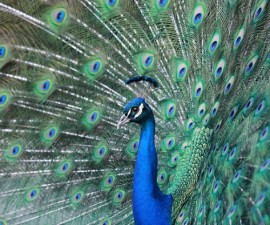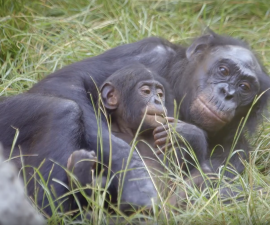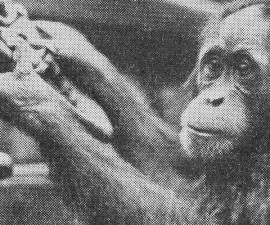BY Karyl Carmignani
Illustrations by Amy Blandford
Primates are a diverse order of mammals that includes prosimians, monkeys, apes, and humans. We all share characteristics like fingernails instead of claws, opposable thumbs, forward-facing eyes, and considerable parental investment in offspring. The gorilla, chimpanzee, bonobo, and orangutan are called great apes due to their robust size, while gibbons and siamangs are called lesser apes because they are smaller, and there is not a significant size difference between males and females. Primates share many characteristics, but there are distinctions between monkeys and great apes. 2016 is the Year of the Monkey in the Chinese zodiac, so take a closer look at monkeys and apes to find out more about them!
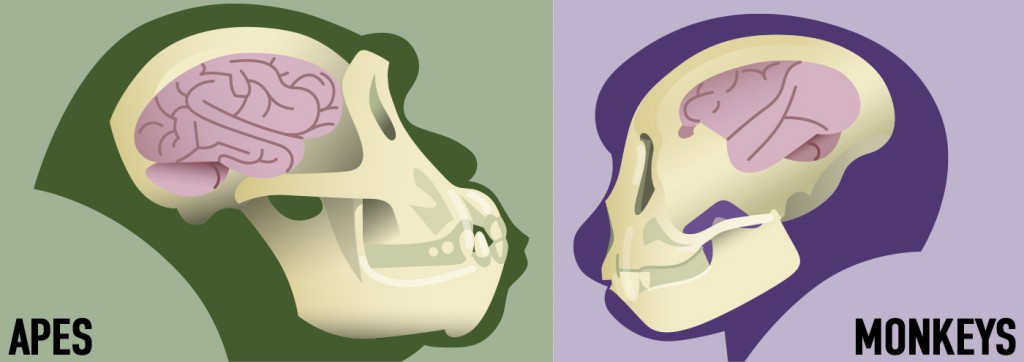
APES
Larger brain
MONKEYS
Smaller brain, but still smart!
APES
Have powerful jaw muscles and a thick jaw bone, adapted for eating tough plants or hard nuts
MONKEYS
Less powerful jaw, adapted more for eating fruit or insects
APES
Molar teeth have five cusps
MONKEYS
Molar teeth have four cusps
APES
Longer life span
MONKEYS
Shorter life span
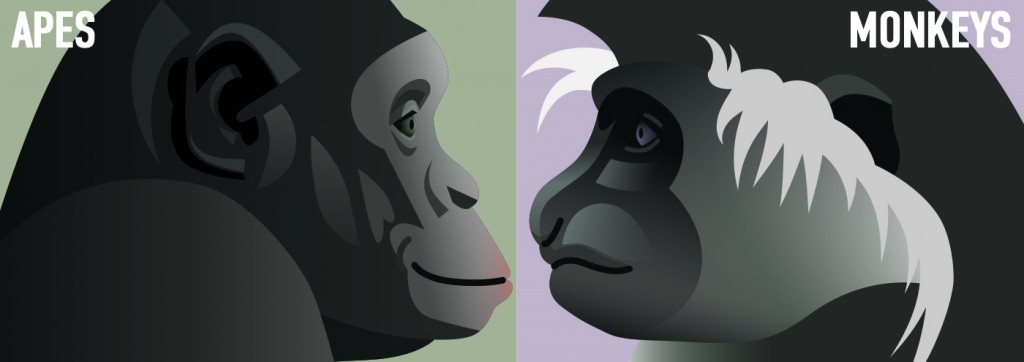
APES
Size range from 4 feet tall and 80 pounds (female bonobo) to 6 feet tall and 400 pounds (male gorilla)
MONKEYS
Size range from 4.5 inches tall and 3.5 ounces (pygmy marmoset) to 3 feet tall and 80 pounds (male mandrill)
APES
Other than humans, only found in the Old World, in Africa and Asia
MONKEYS
Found in the Old World and the New World
APES
Other than humans, only live in tropical habitats
MONKEYS
Live in varied habitats, from tropical forests to dry savannas to snowy mountains
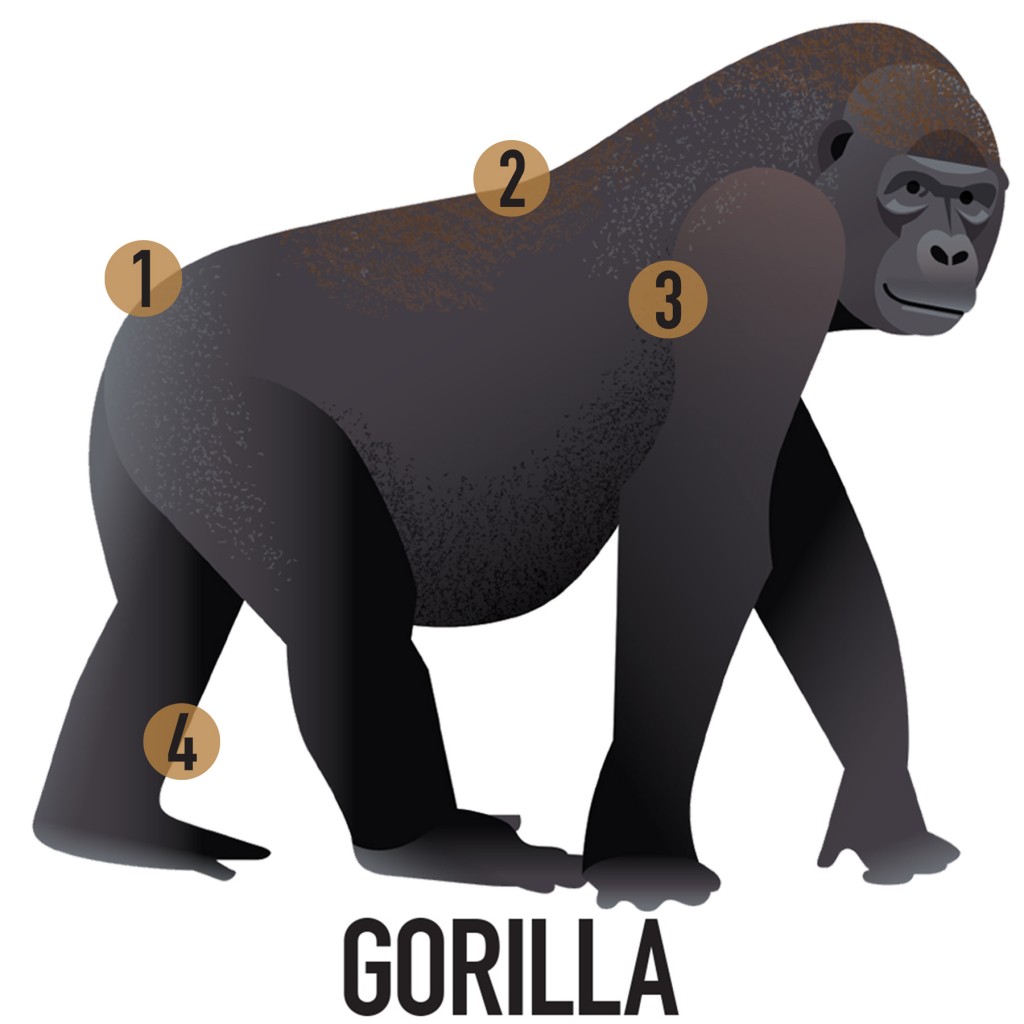
1
No tail?
It’s most likely an ape!
2
Adult great apes
have larger bodies and broader chests and backs than monkeys.
3
Flexible shoulders,
large range of motion in forearms and wrists, and elbows that can fully straighten are great ape features
4
Muscular limbs;
arms longer than legs
DID YOU KNOW?
NO TWO GORILLA NOSES ARE ALIKE. RESEARCHERS TAKE CLOSE-UP NOSE PHOTOS TO IDENTIFY INDIVIDUALS.
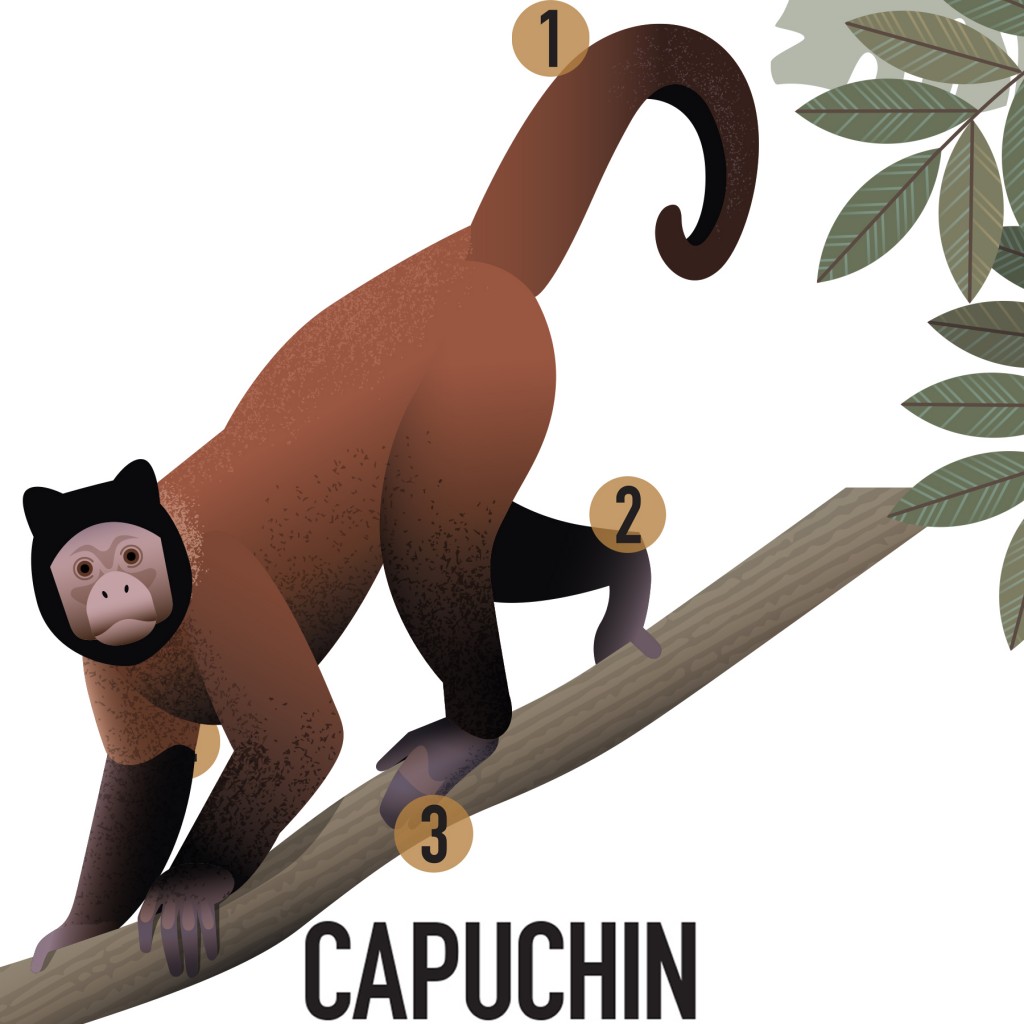
1
Almost all
monkeys have tails.
2
Strong, limber limbs;
legs the same length as arms or longer
3
Agile fingers;
restricted movement of the forearms and wrists; elbows cannot fully straighten
DID YOU KNOW?
CAPUCHIN MONKEYS ARE CONSIDERED ONE OF THE SMARTEST MONKEY SPECIES.
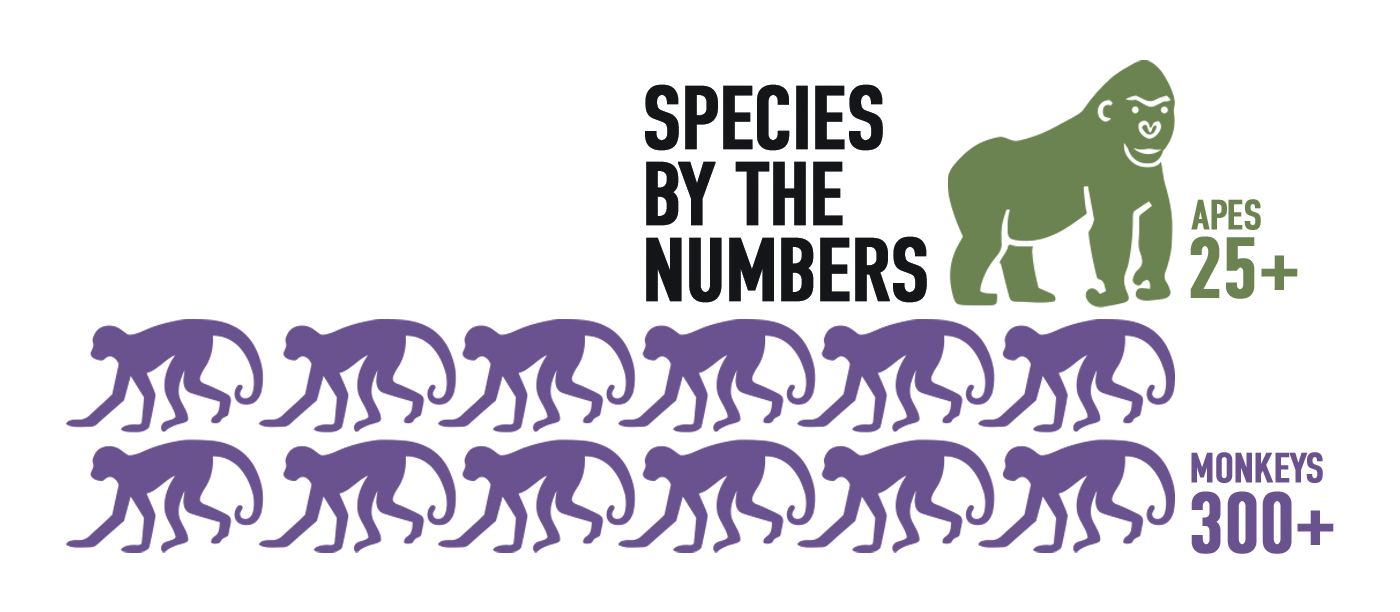
DID YOU KNOW?
LIKE SOME OTHER SPECIES, WOLF’S MONKEYS USE CHEEK POUCHES TO GATHER EXTRA FOOD TO EAT LATER.
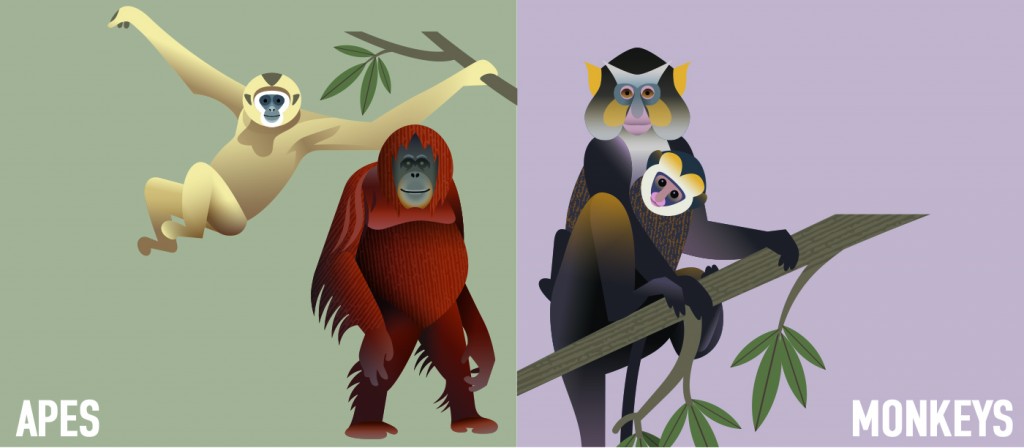
APES
Spend more time on the ground than monkeys, although they do travel, nest, and feed in trees
MONKEYS
Most monkey species are arboreal and spend the majority of their time in trees.
APES
Social groups are variable: family groups led by one male; large, mixed troops; or solitary.
MONKEYS
Monkey social groups are usually mixed family troops.
APES
Able to walk upright on two legs; on all fours, great apes “knuckle walk” on their curled fingers
MONKEYS
Walk and run on all four limbs, tail used as a rudder for balance; some species have a prehensile tail


